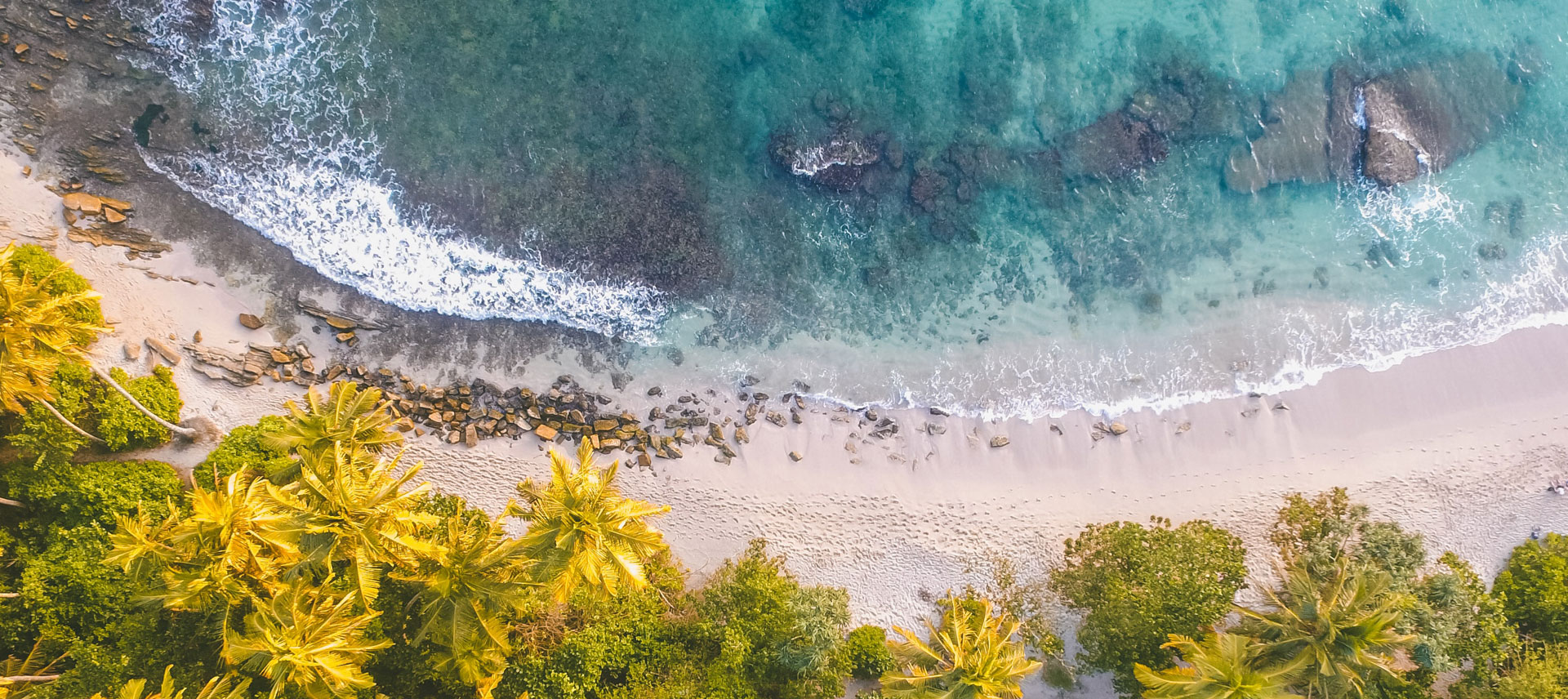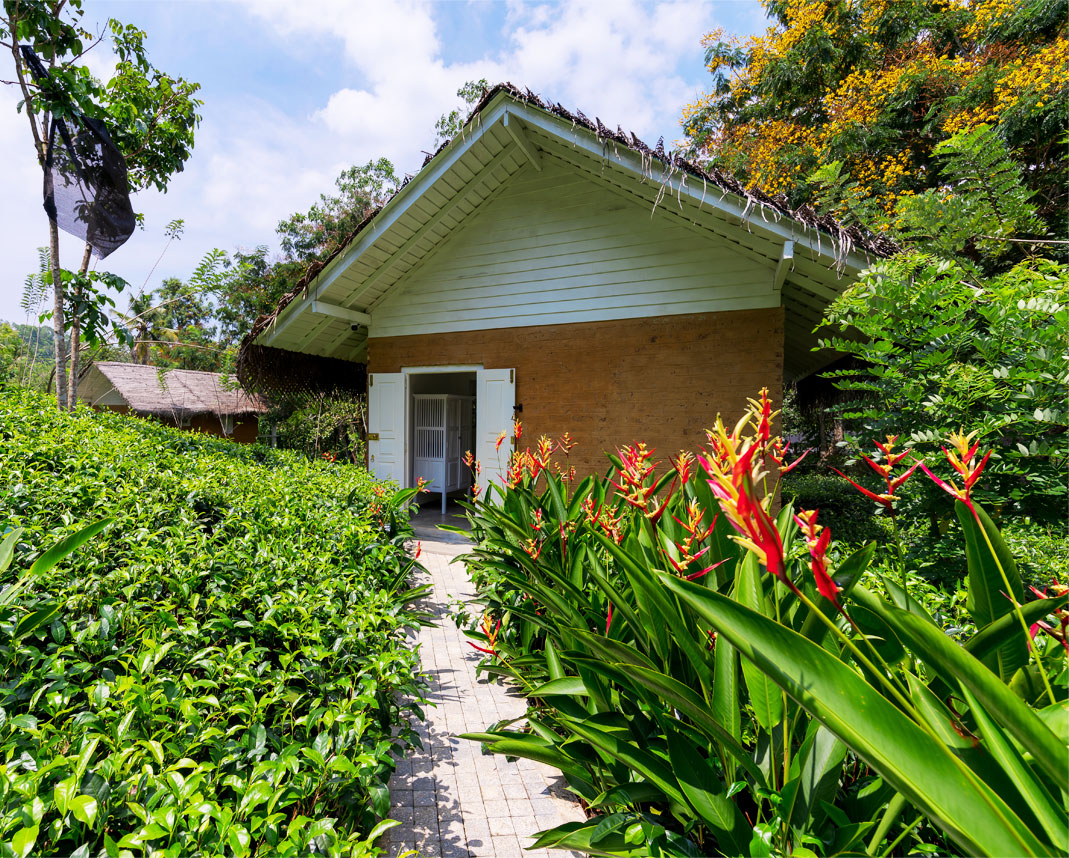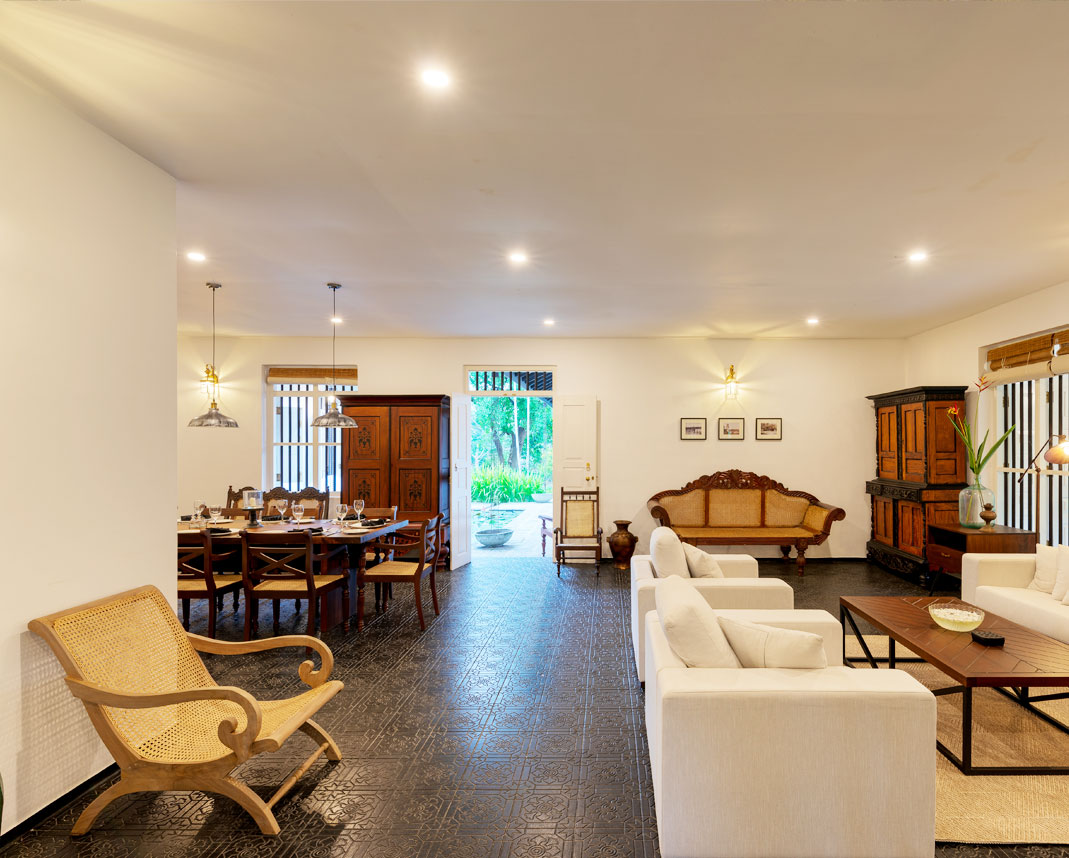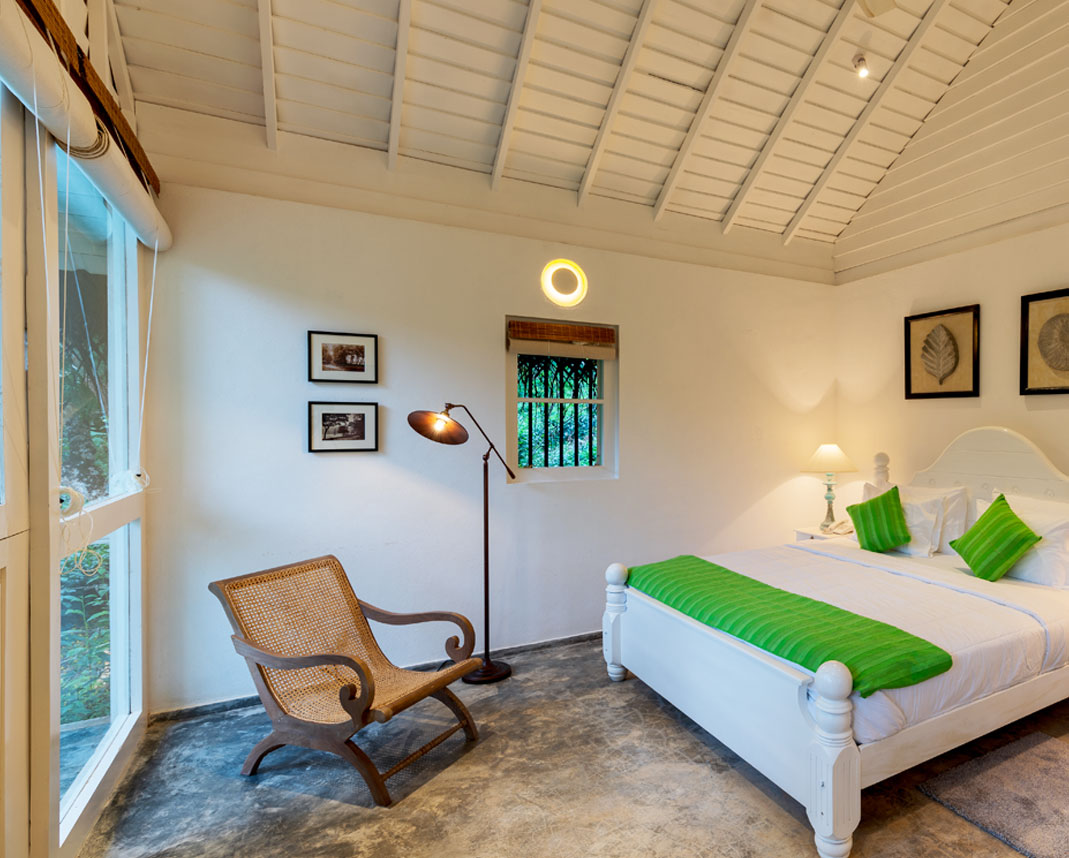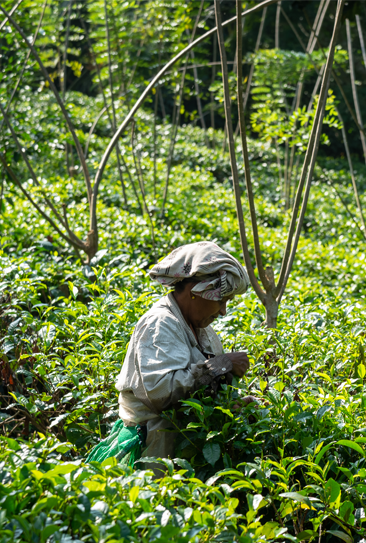From Old Dutch history to secluded beaches
Things to see and do
At the resort, you’ll be offered an authentic tea plucking visit with the estate workers. It’s a unique experience, not to be missed. You can also visit a tea factory to get an experience of the different stages of the tea production process.
The resort is a serene and peaceful environment, ideal for yoga and meditation, and guided yoga and meditation sessions can be arranged by appointment.
Ayurvedic massages and fermentations that revive and heal mind and body can be arranged on request.
If you’re feeling more active, Galle is a traveller’s delight. The old fortified city, Galle Fort, is now a UNESCO World Heritage Site. It bears witness to three periods of colonisation: Portuguese in the 16th century, Dutch in the 18th century and British in the 19th century.
Some other possibilities for your trip include:
- Galle Lighthouse (Pointe de Galle)
An onshore lighthouse built by the British on the southeast tip of the fort in 1848 and the oldest in Sri Lanka.
- Galle National Museum
Established in the oldest Dutch building of the Galle Fort, constructed in 1656; displays a wide range of archaeological and anthropological objects inherited in Southern region.
- Maritime Museum
Located in the old Dutch ware house of the Fort of Galle, built in16719; the only museum which makes the public aware of marine biological and anthropological aspects of Southern coastal area.
- Historical Mansion Museum
Perhaps Sri Lanka’s largest private museum, with apriceless collection of antiques and trivia going back to centuries.
- Unawatuna Beach
One of the most famous beaches in the country
- Jungle Beach
One of the more secluded beaches in the southern coast.
- Galle Harbour
A natural harbour, located in Galle, on the south-western coast of Sri Lanka.
- Japanese Peace Pagoda
Built by Japanese Buddhist monks of the Mahayana sect in2005 as part of their scheme to build peace temples in conflict zones.
- Dutch Reformed Church
Built by the Dutch in 1755 and is one of the oldest Protestant churches in the country.
- Galle International Cricket Stadium
Unbeatably scenic and picturesque, admired the world over.
- Eco-tourism sites
Add an extra dimension to your Sri Lankan experience with whale watching or nature trail tours.
There’s no shortage of ways to exercise.
Apart from sightseeing tours and eco-tourism, you’ll find tons of things to do:

Cycling

Walking

Fishing tours

Canoeing

Surfing

Scuba Diving

Snorkeling

Culturally
rich shopping

Dining
experiences
Quick
Facts
- Sri Jayawardenepura Kotte is the legislative capital of Sri Lanka and Colombo is its largest city and financial centre.
- The country was once called Ceylon.
- For 2300 years the Sinhalese monarchy ruled the island (as the Kandyan Kingdom) until it fell under British rule.
- Ceylon had a Portuguese period that began in 1505 and lasted until 1795, when the Dutch defeated the Portuguese and claimed the country as their own colonial possession.
- Between 1815 and 1948 Ceylon was a British Crown colony with a British Governor.
- In 1948 the country regained its independence.
- The de facto official languages are Sinhala and Tamil, but English is a link language spoken by many.
- The famous Pāli Canon in the Theravada tradition is the earliest known Sri Lankan Buddhist text and the most complete early Buddhist work.
- As a strategically positioned seaport, Galle has been prized (and fortified) by, in turn, the Portuguese, Dutch and British, which is reflected in its local and colonial architecture and richly varied cultural traditions.


